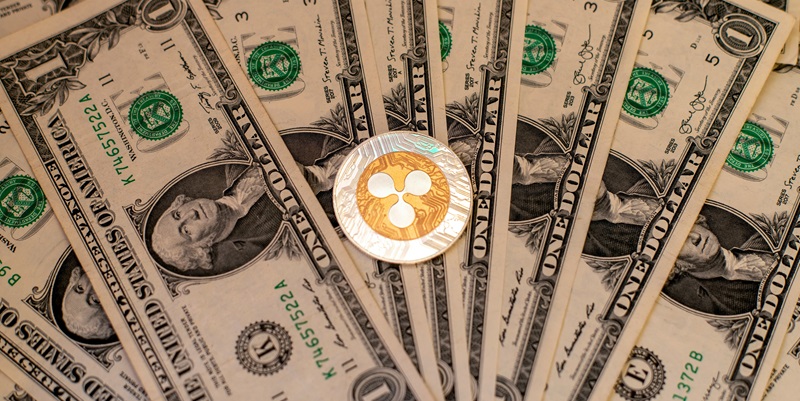Ripple’s recent approval from the New York Department of Financial Services (NYDFS) for its RLUSD stablecoin represents a notable milestone in the evolving landscape of regulated stablecoins. CEO Brad Garlinghouse announced this development, emphasizing the potential impact and importance of this new financial instrument, which could reshape the market dynamics of digital currencies. RLUSD, backed 1:1 by US dollars, short-term US Treasury bonds, and cash equivalents, aims to provide a stable and reliable option for institutional investors.
The Backbone of RLUSD’s Stability
Conservative Stability Model
RLUSD’s conservative stability model distinguishes it from other stablecoins in the market. Unlike algorithmic stablecoins that rely on complex mechanisms to maintain their value, RLUSD is backed by tangible assets such as US dollars, short-term US Treasury bonds, and cash equivalents. This backing ensures that each unit of RLUSD maintains its value consistently, appealing to institutional investors seeking dependable digital assets. The rigorous backing model not only fortifies the coin’s stability but also enhances investor confidence, setting RLUSD apart from more volatile, less predictable stablecoins.
Thorough testing of RLUSD on both the XRP Ledger and Ethereum networks indicates its robust design and readiness for a multi-chain deployment. By supporting multiple blockchain platforms, RLUSD aims to enhance Ripple’s cross-border payment solutions, providing greater flexibility and efficiency. This move also positions RLUSD as a strong competitor to major stablecoins like USDC and Tether, which currently dominate the market.
Competing with Major Stablecoins
Ripple’s strategic entry into the regulated stablecoin market puts it in direct competition with prominent players such as USDC and Tether. USDC holds a market cap of approximately $40 billion, while Tether boasts a staggering $138 billion. By offering a stablecoin backed by real assets and supported by rigorous regulatory approval, Ripple aims to capture a significant market share from these established giants. The collapse of algorithmic stablecoins like Terra’s UST in May 2022 has underlined the importance of regulated, asset-backed stablecoins in maintaining market stability.
Ripple’s RLUSD, with its conservative backing and regulatory safety nets, reflects a concerted effort to provide a secure alternative in the crypto space. Unlike UST, which collapsed due to an unsustainable algorithmic mechanism, RLUSD’s backing with real assets signifies a broader industry shift towards more secure and transparent digital currencies. The RLUSD launch underscores Ripple’s commitment to offering a viable, trustworthy digital asset, potentially leading to broader adoption in institutional finance.
Impact on Ripple’s Cross-Border Payment Solutions
Leveraging Multi-Chain Functionality
The multi-chain functionality of RLUSD is set to enhance Ripple’s cross-border transaction capabilities. By being deployed across both the XRP Ledger and Ethereum networks, RLUSD ensures greater interoperability and financial inclusion in the digital economy. This strategic move not only mitigates risks associated with relying on a single blockchain but also opens up new avenues for cross-border payments and remittances.
Ripple has long been a pioneer in facilitating efficient and low-cost cross-border transactions. The introduction of RLUSD, backed by robust regulatory approval, further solidifies its position in the financial technology sector. By leveraging the core strengths of both RLUSD and XRP cryptocurrencies, Ripple aims to offer seamless and secure payment solutions, thereby increasing its traction among institutional clients.
Enhancing Institutional Appeal
Institutional investors have historically been wary of the volatility and regulatory uncertainties surrounding cryptocurrencies. However, RLUSD’s backing by real assets and compliance with stringent regulatory standards make it an attractive proposition. By providing an alternative to more risky stablecoins, Ripple positions itself as a leader in promoting stability and secure financial instruments in the crypto market.
Ripple’s focus on institutional investors is evident in its meticulous design of RLUSD. The stablecoin’s deployment across multiple chains and its rigorous asset backing not only enhance its utility but also ensure compliance with regulatory norms. This dual focus on technical robustness and regulatory compliance makes RLUSD a compelling option for institutions looking to diversify their digital asset portfolios.
Broader Implications for the Stablecoin Market
Moving Towards Increased Regulation
The approval of RLUSD by NYDFS marks a significant step towards increased regulatory oversight in the stablecoin sector. The collapse of Terra’s UST and the subsequent bankruptcies of major players like Three Arrows Capital and FTX highlighted the systemic risks posed by unregulated stablecoins. With RLUSD’s regulatory backing, Ripple sets a precedent for other stablecoin issuers to follow, encouraging a more secure and transparent framework for digital transactions.
RLUSD’s regulatory approval also aligns with broader trends in the digital asset market towards greater transparency and security. As regulators worldwide continue to tighten their grip on the cryptocurrency sector, the RLUSD model offers a blueprint for other stablecoins. This move towards regulation is likely to bolster investor confidence and encourage wider adoption of digital currencies in traditional finance.
The Future of Digital Assets
Ripple recently obtained approval from the New York Department of Financial Services (NYDFS) for its RLUSD stablecoin, marking a significant advancement in the realm of regulated stablecoins. CEO Brad Garlinghouse revealed this pivotal achievement, underscoring the potential ramifications and the significance of this new financial instrument. The RLUSD stablecoin, which is backed 1:1 by US dollars, short-term US Treasury bonds, and cash equivalents, is designed to offer a stable and dependable option for institutional investors.
This approval from NYDFS could be a game-changer in the digital currency market, as it emphasizes regulatory compliance and trust, which are crucial for institutional adoption. The RLUSD aims to combine the benefits of blockchain technology with the stability and reliability associated with traditional financial instruments. This development not only reflects Ripple’s dedication to innovation but also highlights the growing acceptance and integration of digital assets within the regulated financial ecosystem.

